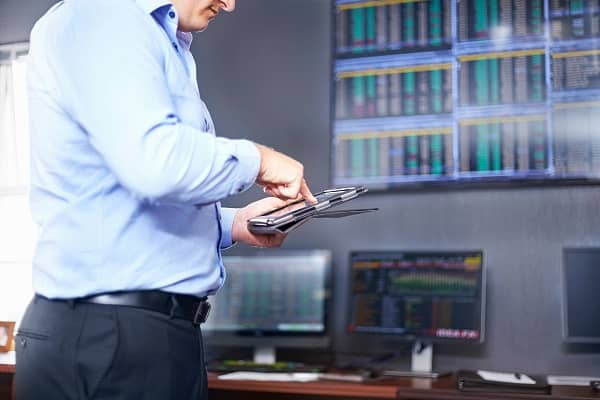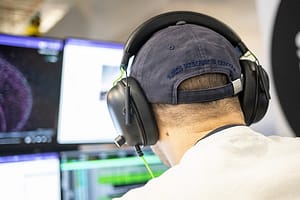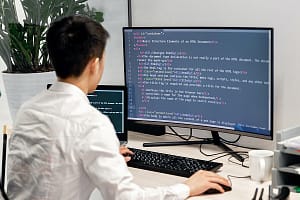Looking to learn more about the exciting world of forex trading? Over the past 30 years, the forex market has significantly transformed from opaque phone deals to a technologically advanced trading landscape. One of the biggest changes has been the emergence of algorithmic trading, which has revolutionised the way forex trading operates. While algorithmic trading has brought many benefits, including increased efficiency and accuracy, it also comes with inherent risks that traders should be aware of. In this article, you’ll explore the fundamentals of forex and algorithmic trading, highlighting the advantages and potential pitfalls of this exciting new development in currency trading.
What is forex algorithmic trading?
The expansion of algorithmic trading in forex markets over the past several years has been primarily attributed to algorithms’ ability to automate some operations and cut down on the number of hours required to complete deals. Lower expenses are incurred when these operations are executed, such as when trading orders are carried out, thanks to automation’s efficiency. It is substantially more efficient for traders to automate the trading process with an algorithm while working with mt5 forex brokers that trades based on predetermined parameters, such as executing orders over a predetermined time period or at a predetermined price. The algorithms that are set up to update the prices of currency pairings on computerised trading platforms have also been used by banks. These algorithms reduce the frequency of errors while also speeding up the rate at which banks can quote market prices.
Algorithms have improved a lot of processes, usually leading to lower transaction costs. Yet, these are not the only elements contributing to the expansion of forex algorithmic trading. Since high-frequency trading and the ability to swiftly analyse data and execute orders have allowed traders to take advantage of arbitrage opportunities presented by little price differences between currency pairings, algorithms are being employed for speculative trading more and more.
How does it work?
Forex algorithmic trading involves using computer programs to execute trades automatically based on pre-set rules and parameters. These rules can be based on technical indicators, fundamental data, or other factors and are designed to identify trading opportunities and execute trades quickly and accurately. To use algorithmic trading, a trader must first create a strategy that includes the rules for entering and exiting trades. This can be done using a programming language such as Python or a trading platform supporting algorithmic trading. Once the trading strategy is created, the trader can backtest it using historical market data to see how it would have performed in the past. This allows the trader to optimise the strategy and make necessary adjustments before deploying it in live trading. During live trading, the algorithmic trading program will monitor the market for signals that match the pre-set rules of the trading strategy. When a signal is detected, the program automatically executes the trade within milliseconds.
Improved efficiency and speed of trading
In the fast-paced world of forex trading, speed and efficiency can mean the difference between a profitable trade and a missed opportunity. That’s where algorithmic trading comes in. By automating the trading process, algorithmic trading can execute trades much faster and more efficiently than a human trader ever could. With the ability to process vast amounts of data in real-time, algorithmic trading programs can quickly analyse market trends and execute trades based on pre-set rules and parameters. This increased speed and efficiency can lead to more profitable trades and can also help traders take advantage of short-term market movements that may not be visible to the human eye.
Reduced risk of human error and emotional bias
One of the biggest advantages of algorithmic trading is its ability to reduce the risk of human error and emotional bias in trading decisions. Human traders are prone to making mistakes or allowing their emotions to cloud their judgment, which can lead to costly trading mistakes. With algorithmic trading, trading decisions are made based on pre-set rules and parameters, eliminating the risk of emotional bias and human error. This can lead to more consistent trading results and can also help traders avoid common pitfalls such as overtrading or holding onto losing trades for too long.
Ability to analyse large amounts of data and execute trades quickly
In today’s data-driven world, the ability to analyse large amounts of information is crucial to making informed trading decisions. With algorithmic trading, traders can analyse vast amounts of market data in real-time, allowing them to identify trends and opportunities that may be invisible to the human eye. Once a trading opportunity is identified, algorithmic trading programs can execute trades quickly and accurately, often within a matter of milliseconds. This speed and accuracy can help traders take advantage of short-term market movements and can also reduce the risk of missing out on profitable trades.
What are the steps for using Forex Algorithmic Trading?
Forex algorithmic trading is a popular method of trading in today’s fast-paced market. It involves using computer programs to analyse market data and execute trades automatically based on pre-set rules and parameters. Here are the three key steps for using forex algorithmic trading.
1. Identifying key trading signals and indicators
The first step in using algorithmic forex trading is to identify the key trading signals and indicators that will form the basis of your trading strategy. This may involve analysing historical market data to identify trends and patterns or using technical indicators such as moving averages or relative strength index (RSI) to identify entry and exit points.
2. Building and testing trading algorithms
Once you have identified your key trading signals and indicators, the next step is to build and test your trading algorithms. This involves programming your trading strategy into a computer program or trading platform and backtesting it using historical market data to evaluate its performance. During this stage, you may need to make adjustments to your algorithm based on the results of your testing to ensure that it performs as expected.
3. Incorporating risk management techniques into your algorithmic strategy
The final step in using algorithmic forex trading is to incorporate risk management techniques into your algorithmic strategy. This may involve setting stop-loss orders or other risk management tools to help minimise losses in the event of a market downturn. By incorporating risk management techniques into your algorithmic strategy, you can help to minimise the impact of unexpected market events and ensure that your trading remains profitable over the long term.
The above information does not constitute any form of advice or recommendation by London Loves Business and is not intended to be relied upon by users in making (or refraining from making) any investment decisions. Appropriate independent advice should be obtained before making any such decision. London Loves Business bears no responsibility for any gains or losses.






Leave a Comment